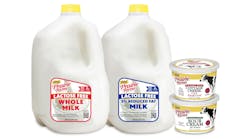Scheduling and forecasting operations are essential tasks required of any food or beverage processing facility that seeks efficiency and stability. Often, that’s easier said than done, as consumer preferences, raw material availability and changing regulations and product specifications can hamstring even the smoothest operation.
Yet, processors don’t have to scramble to make the calendar work for them: Using the right tools and strategies, they can find time enough to process all the products they desire.
“Food and beverage may be the most difficult industry for scheduling and forecasting; you have to deal with variable demand and supply, so planning is a complex task,” says Marcel Koks, industry strategy director-food and beverage for Infor. “Then there are disruptions, especially the last couple of years with the pandemic and new disruptions since.”
Unpredictable demand patterns also can make scheduling and forecasting a challenging task for food processing facilities, explains Tom Woodward, chief commercial officer for Universal Pure, a high-pressure processing and cold-chain solutions provider.
“Macro trends in the industry have created more challenges for food processing facilities when scheduling,” he says. “Disrupted supply chains, last-minute changes by retailers and distribution centers have a cascading effect on production.”
A mastery of these tasks is necessary to ensure that production processes run smoothly, meet customer demand and optimize the use of resources. The scheduling process involves assigning tasks and activities to specific resources, including human resources, equipment and materials. Forecasting uses data to predict future demand for products and resources and leads into production scheduling on a longer-term basis.
Many processors may have a system in place, explains Koks, but that system remains a manual-driven process and thus may not be producing the best results.
“When you look at planning and production scheduling, a lot of companies are still using spreadsheets, with someone I’ll call a ‘super planner’ who has 30 years of experience in the business and has seemed to figure out a way to optimize the plan,” Koks explains.
But a human, he says, cannot see such a complex process holistically, often simplifying the problem and creating a model that is too inflexible in an emergency. The complexity of processing creates its own challenges. Depending on the final product, processing often involves the use of complex equipment and specialized personnel. This makes it difficult to optimize production and allocate resources effectively.
“When you are making a fresh product and have to respond to changing demand within the shift, there's less opportunity to optimize in a manual process,” Koks says. “Today, you can use artificial intelligence and a machine-learning model to adjust the process in real time, and that will improve output.”
Advanced planning and scheduling software can help optimize production schedules and allocate resources effectively. It can also help identify bottlenecks in the production process, such as equipment downtime, and suggest solutions to overcome them.
Many of these solutions leverage various tools and techniques, such as statistical analysis, machine learning and predictive analytics to help processors identify patterns in data and use them to make accurate demand forecasts. According to Maurice Ham, supply chain planning project manager for Infor, the tidal wave of data that processors can peel from their equipment today can offer additional flexibility.
“There is so much more data nowadays, and you can get manufacturing execution systems with signals that levels are high or low or being utilized faster or slower, and you need to react to that data real time,” he says. “Algorithms provide the best possible output on the operations and strategic level to try to prevent an issue, keep it local and solve it quickly.”
Both Koks and Ham believe the demand for data science and analysts to properly advise processors on those insights will rise in the future.
With perishable raw materials and ingredients, and finished products with their own limited shelf life, the industry must maintain tight control over the production process to minimize waste and ensure the highest quality of products. Ham says any changes need to take into account shelf-life impact on the ingredients and the final product.
“Customers want the freshest product and the best conditions, and switching can have an impact on shelf life throughout your supply chain,” he reminds processors. Availability of those ingredients can also trip up the process, impacted by various factors such as weather, transportation and political events. A disruption in the supply chain can lead to shortages of raw materials, which can affect the production process, Koks adds.
“In the past, a fixed network of suppliers might have worked, but today you have to look at alternative suppliers, both globally and locally, to protect yourself,” Koks says. “That’s not always easy because if you switch to a different oil supplier in your recipe, it might impact nutritional values and aspects of the formulation.”
Woodward believes that processors able to look laterally at their business and their customer base will always have an advantage, no matter how quickly they are growing.
“As customers grow, they frequently introduce line extensions and new products, and automation can be deployed to address some of that growing complexity,” he says. “Successful processors understand their customer base and the growth objectives of their customers.”
Food safety also can impact scheduling and forecasting, from changing regulations to recalls on a processor’s own product or a specific ingredient or raw material. Equipment could create a food safety issue and create a delay in production for sanitation, repair or replacement. Food safety management systems can help coordinate these efforts through regular audits, training programs and compliance monitoring. They also leverage technology to ensure compliance with regulations and standards.
The unpredictability of demand can be particularly challenging to overcome. But Woodward says Universal Pure tries to anticipate and adapt by keeping the lines of communication with its customers wide open, coordinating with them weekly if not daily. Whether a processor automates the nuts and bolts of the scheduling and forecasting steps it takes, the human element cannot be completely eliminated.
“Nothing can replace active and transparent communications: Planning, set delivery and pickup appointments, and a clear understanding of handling and processing procedures are necessary to maintain efficiencies and effectiveness,” he adds. “The better we understand expectations and processes, the better we can prepare.”


